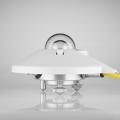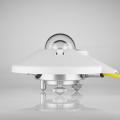
Pyranometer SP Lite2
SP Lite2 is designed for routine measurement of solar radiation.
It is especially designed for:
- Photovoltaic / solar energy module monitoring
- Agricultural evapotranspiration estimation
- Air pollution dispersion calculations using the Delta-T method
- Educational purposes
SP Lite2 can be used under all weather conditions. The sensor measures the solar energy received from the entire hemisphere. It is ideal for measuring available energy for use in solar energy applications, plant growth, thermal convection and evapotranspiration.
SP Lite2 uses a photodiode detector, which creates a voltage output that is proportional to the incoming radiation. Also due to the unique design of the diffuser, its sensitivity is proportional to the cosine of the angle of incidence of the incoming radiation, allowing for accurate and consistent measurements.
SP Lite2 is easy to use. It can be directly connected to voltmeter or data logger. Direct readout in Watts per square meter (W/m²) can be derived from the measured voltage divided by the calibration coefficient. It is fitted with the Kipp & Zonen high quality yellow cable.
SP Lite2 features adjustment screws and a bubble level integrated in the mounting flange for your convenience. A threaded hole in the body of the housing takes our accessory screw-in mounting rod. Two instruments can easily be bolted back-to-back amd fitted with a mounting rod to make a simple albedometer.
| Spectral range | 400 to 1100 nm |
| Sensitivity | 60 to 100 µV/W/m² |
| Response time SP Lite2 (95%) | < 500 ns |
| Directional error (up to 80° with 1000 W/m² beam) | < 10 W/m² |
| Temperature response | < -0.15 %/ºC |
| Operational temperature range | -40 °C to +80 °C |
| Maximum solar irradiance | 2000 W/m² |
| Field of view | 180 ° |
| Title | Description | Filename |
|---|---|---|
| SP Lite2 brochure | KippZonen_Brochure_Pyranometer_SP_Lite2_V1401.pdf |
For more information

"We have found the products and services provided by AMES to be of the highest quality and have never been disappointed in their After Sales Service."
Ralph F. Petragnani
Vice President, Sales & Marketing
Belfort Instrument Company
Baltimore, Maryland, USA













